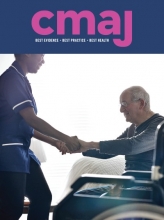Offering incentives for young doctors to work in underserved areas appears to be paying off in the United States.
According to new data from the Association of American Medical Colleges (AAMC), 23.7% of physicians who completed their residency from 2007 to 2016 are practising in underserved areas, up from 21.7% between 2003 and 2012.
“We’re starting to see some places that were underserved just five years ago, now fall off the map as far as being underserved and now have enough physicians,” said Joseph Johnson, president of the American Medical Student Association.
Many doctors settle where they train; 54.5% of those who completed residency between 2007 and 2016 are still practising in the same state.
The challenge has been enticing young doctors to train in underserved areas in the first place. These areas are often rural, but can also be found in large cities. In the US, they’re classified on an index that factors in the ratio of primary doctors per 1000 population, as well as the percentage of seniors, the infant mortality rate, and poverty levels.
State governments and universities have been creating incentives to attract more doctors to underserved areas. For example, one Oklahoma program pays medical students $15 000 a year for up to four years and family practice residents $1000 per-month stipends for up to three years, if they commit to practise in a rural community for as long as they were subsidized. Kentucky offers $80 000 to primary care physicians who make a two-year commitment to practise full-time in an underserved area.
Johnson studies at Lincoln Memorial University in Tennessee, but will be returning to his home state of Georgia to fulfill a three-year contract in an underserved area in exchange for payments of $25 000 annually toward his student debt.

Nearly a quarter of newly graduated physicians in the United States are working in underserved areas.
Image courtesy of Weekend Images Inc./iStock
The AAMC has been tracking the trend of new doctors working in underserved areas for only a few years, which is why limited information is available, explained Dr. Janis Orlowski, the organization’s chief health care officer
“As we have talked about physician workforce shortages, states have become more interested, and we can tell you, anecdotally, more states have taken a look at the data that we put out.”
Canada also struggles to attract physicians to underserved areas. In 2012, only 8.5% of physicians worked in rural and remote areas, which are home to 18% of the population.
The federal government offers $8000 annually in loan forgiveness, up to a total of $40 000, for family doctors and family medicine residents who practise a minimum of 400 hours in designated remote communities.
Christina Schweitzer of the Canadian Federation of Medical Students says every medical school should provide opportunities for training in these regions. Some Canadian medical schools, such as the Northern Ontario School of Medicine, have rural clerkship programs that expose students to practise in underserved areas before they commit to several years of residency.
“But when these are oversubscribed, as some have been this year, students who want to pursue their training in a rural area are denied that opportunity,” and may be discouraged from exploring further, said Schweitzer. “We need funding and support in place for these rural clerkship programs so that any student who wants to train rurally has the opportunity to do so.”
Footnotes
Posted on cmajnews.com on Jan. 31, 2018.











